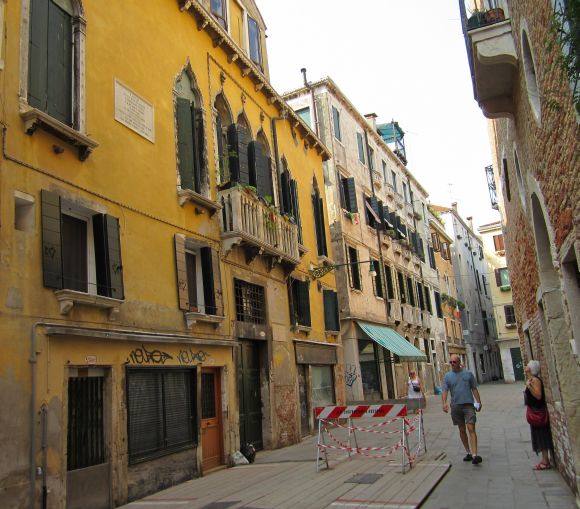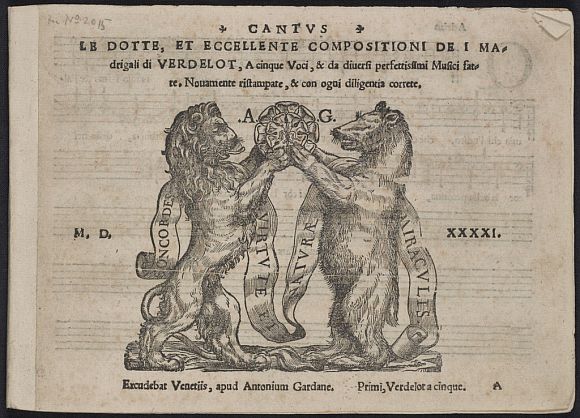

As all the world knows, Venice used to be one of the most important cities in Europe for printing — books, music, heretical works banned by the Catholic church. Even in the last century there were still 20 printing presses in Venice.
If one were to want to know more, it’s pretty much enough just to read the story of Aldus Manutius (Aldo Manuzio, in Italian), who singlehandedly midwifed the Renaissance by printing (and translating) many of the Greek classics which survived antiquity, few as they are. Do I exaggerate? It’s thanks to him we non-Greek-speaking people can read Aristotle, Thucydides, Sophocles, Herodotus, Xenophon, Euripides, Demosthenes….
He also invented the pocket-sized book, and italic letters. You see how many things we take for granted?
But this is not a post about Aldus. It’s about Antonio Gardano and Johannes Buglhat and their big battle of the woodcuts.
They were part of the brigades of other excellent printers hard at work in the 15th and 16th centuries, and these printers were not all drinking buddies. Being merchants, they had to keep a sharp eye on their competitors. Sometimes very sharp eyes.
A friend has sent me an article by David Plylar, from the Library of Congress blog, which deals with the woodcut slanging between the aforementioned publishers.
Rather than reprint it here, the author has suggested that I only give the link. I myself think it’s pretty funny. But you decide.


3 Comments
Not to stray too far from central point of the spat between the two Venetian publishers, but there is a connection between this very blog and Aldus Manutius.
What our beloved cyberscribe of Venice is going here used to be called desktop publishing.
If the web hadn’t emerged as the most efficient delivery platform for Erla to publish her musings, she would likely be producing this as a newsletter. Most people who used to write newsletters have migrated their production to the web; the web also spawned an easy-to-use publishing platform initially called a “web log,” now known as a “blog.”
In 1985, when Apple’s Macintosh computer was able to display well designed fonts and the ability to manipulate them in much the same way that printers and typographers had for centuries, some software entrepreneurs in Seattle created a program the took the output from the Mac and allowed individuals to become small publishers by creating elegant formatted newsletters.
They started the desktop publishing revolution that, over the next decades, led to the decline of small press shops that for centuries specialized in the art and craft of fine printing, often set by hand.
The name of the company that launched desktop publishing was Aldus.
So the next time EZ passes down that street where Aldus Manutius “midwifed the Renaissance” she should count herself as one of his descendants.
what is the address of Aldus Manutius’ house in Venice?
This warms my heart and all my other internal organs, because it means that (A) Aldus isn’t known only to people in the printing/antiquary/history game, and (B) that somebody in the electron game knows about our common ancestor in communication and desires to pay him homage. Homage is something in extremely short supply nowadays, just as it always has been, and it gives me a short blast of happiness to know that in Seattle, where people throw away their rear-view mirrors because they’re so busy peering at the future, at least somebody had the spirit of recognition and appreciation.